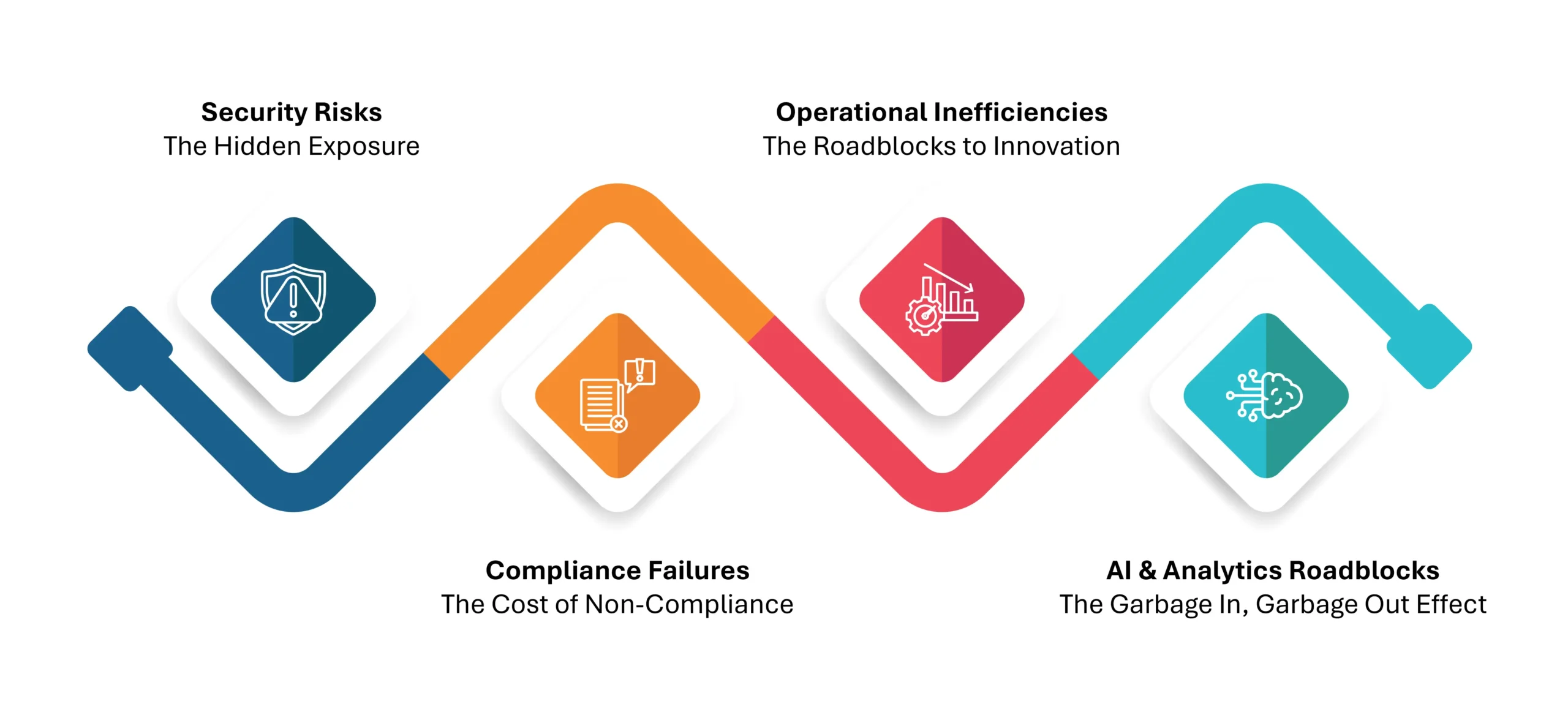Who Owns the Data? The Battle for Control in a Digital World
Data is the new currency, but who truly owns it? In a world where organizations generate, store, and process petabytes of information daily, the question of data ownership is no longer theoretical—it’s a strategic imperative. The reality is, most enterprises are struggling to define it, and the consequences of ambiguity are costly.
Ownership vs. Control: What’s the Difference?
Think of data like real estate. You might own a piece of land, but zoning laws, tenant agreements, and infrastructure regulations dictate how you can use it. The same applies to data. Ownership isn’t just about possession—it’s about having the right to decide how data is used, who has access to it, and what protections are in place. Without clear ownership, data governance becomes a guessing game, leading to security risks, compliance nightmares, and missed business opportunities.
What is Data Ownership?
Data ownership refers to the rights, control, and accountability assigned to an entity—whether an individual, business, or government—over a specific set of data. It defines who has the legal and operational authority to manage, modify, share, and protect data, as well as the responsibilities associated with ensuring its integrity, privacy, security, and compliance.
The Data Tug-of-War: Who Owns It?
Ownership should be straightforward, but in reality, it’s a messy, multi-stakeholder battle where control, access, and responsibility are constantly in flux. Different teams within an organization, external partners, and even regulators all claim some level of authority over data. This results in overlapping responsibilities, fragmented governance, and a lack of accountability—all of which create risks rather than efficiencies.
- IT & Security Teams: They argue that since they manage storage, security, and regulatory compliance, they should have the final say. They enforce access controls, encryption, and threat detection, ensuring that sensitive data isn’t exposed. But while they secure the data, they often don’t understand its business context, leading to bottlenecks in access and decision-making.
- Business Units & Data Teams: Marketing, finance, HR, and product teams generate and utilize data daily. From customer insights to financial reports, they rely on data for decision-making and innovation. However, they often feel hamstrung by IT-imposed restrictions, leading to shadow IT—where teams store and process data outside official enterprise systems, increasing security and compliance risks.
- Customers & Employees: Personal data is the battleground of modern regulations like GDPR, CCPA, and the DPDP Act. Consumers and employees want control over how their data is used, demanding transparency, consent-based sharing, and the right to be forgotten. Organizations that fail to respect these rights face hefty fines, lawsuits, and reputational damage.
- Cloud Providers & Third-Party Vendors: The rise of cloud storage and SaaS applications complicates ownership even further. Data is no longer confined to on-premises servers—it lives in multi-cloud environments, third-party analytics platforms, and external collaboration tools. While cloud providers ensure availability and security, enterprises remain legally responsible for governance and compliance. This creates a paradox where businesses rely on external platforms but must still own the associated risks.
With so many competing interests, data ownership remains undefined in many organizations. Without a structured approach, enterprises fall into a gray area where no one truly takes responsibility—leading to inefficiencies, security gaps, and compliance risks.
The Cost of Ownership Ambiguity

A lack of clear data ownership doesn’t just create confusion—it translates into real business problems with tangible consequences. The more fragmented and undefined data ownership is, the more vulnerable enterprises become to security threats, compliance violations, and operational inefficiencies.
- Security Risks: The Hidden Exposure
Data that doesn’t have a clearly defined owner is a liability. Unused, unmonitored, and orphaned data is often left unprotected, sitting in forgotten storage locations, unpatched systems, or legacy databases. This makes it a prime target for cyberattacks. Insider threats, accidental leaks, and ransomware attacks thrive in environments where no one is accountable for securing the data.
- Compliance Failures: The Cost of Non-Compliance
In an era of strict data privacy laws, unclear ownership can lead to regulatory breaches. If no one knows who is responsible for ensuring compliance, organizations risk fines, legal battles, and reputational damage. Consider the growing list of global regulations—GDPR, CCPA, DPDP, and emerging AI governance frameworks—each with steep penalties for mishandling data. Without clear ownership, organizations struggle to enforce policies, respond to data subject requests, and ensure lawful data processing.
- Operational Inefficiencies: The Roadblocks to Innovation
Data silos, inconsistent policies, and restricted access slow down innovation. When business users don’t have quick access to the data they need, they either wait for IT approvals or bypass governance altogether, resorting to shadow IT practices that introduce more risk. Poor ownership also leads to duplicate data storage, redundant analytics efforts, and wasted cloud spending, draining enterprise resources.
- AI & Analytics Roadblocks: The Garbage In, Garbage Out Effect
AI and machine learning models are only as good as the data they’re trained on. If ownership is undefined, data quality suffers—becoming incomplete, inconsistent, or non-compliant. This directly affects AI-driven insights, leading to flawed models, biased outputs, and inaccurate business decisions. Enterprises investing in AI must prioritize clean, well-managed, and well-governed data—which starts with clear ownership.vvv
Data ownership isn’t just about assigning responsibility—it’s about enabling business agility, security, and trust. Organizations that fail to define ownership will find themselves drowning in complexity, while those that establish clear governance structures will unlock the full potential of their data for security, compliance, and innovation.
Industry Insights & Trends
- According to Gartner, bad data costs businesses $12.9 million annually on average, much of it preventable with the right ownership practices.
- According to a study by Experian, 95% of businesses believe poor data quality undermines business performance, with 77% attributing it to unclear data ownership and accountability.
- A survey conducted by Joe Pulizzi found that 80% of creators believe data ownership is crucial for their ability to create and monetize content.
Getting Started with Data Dynamics:
- Read the latest blog: The CISO’s New Mandate: Governing Internal Data Policies to Defend Against AI-Powered Threats in 2025
- Learn about our Unstructured Data Management Software – Zubin
- Schedule a demo with our team






